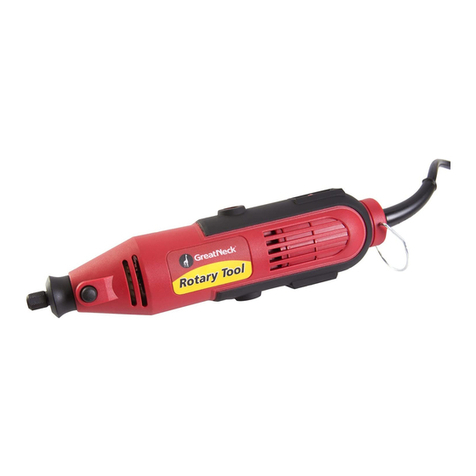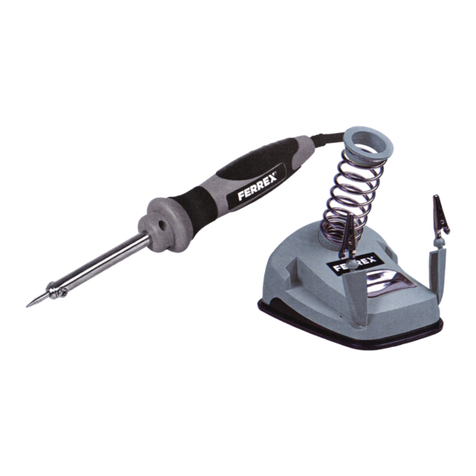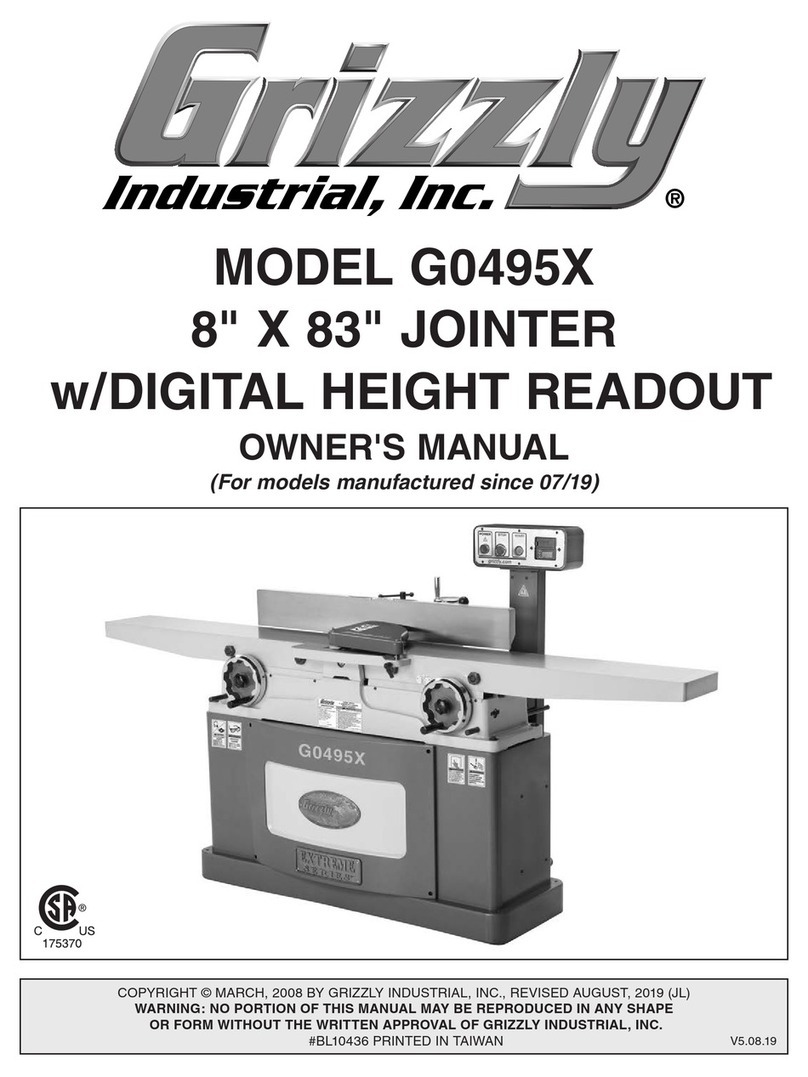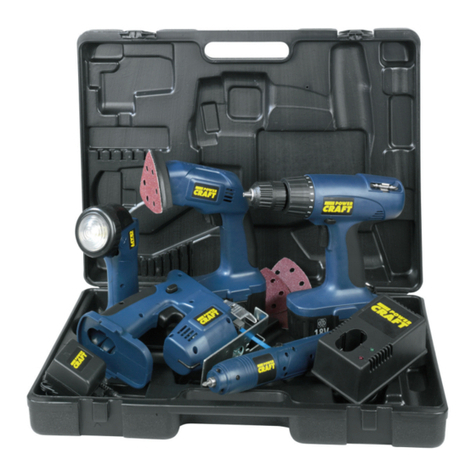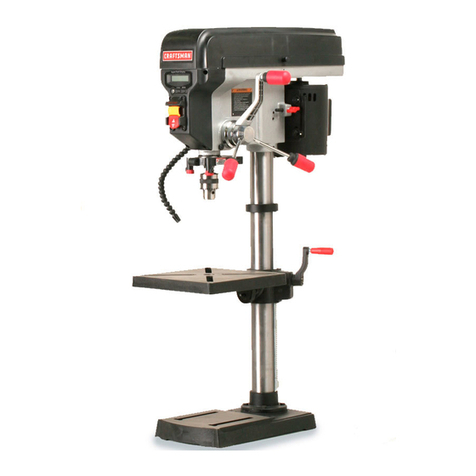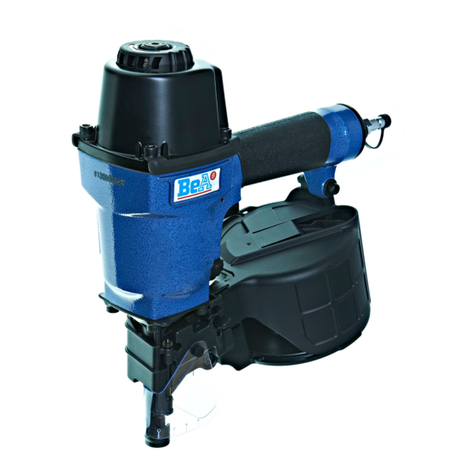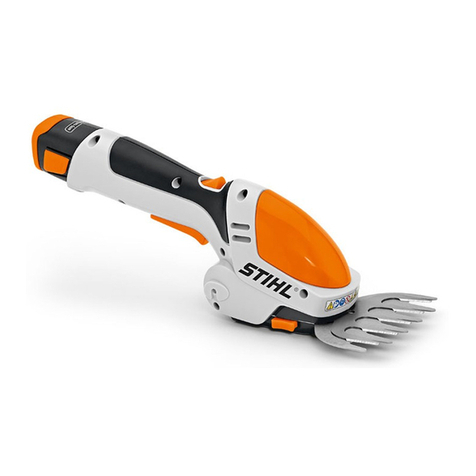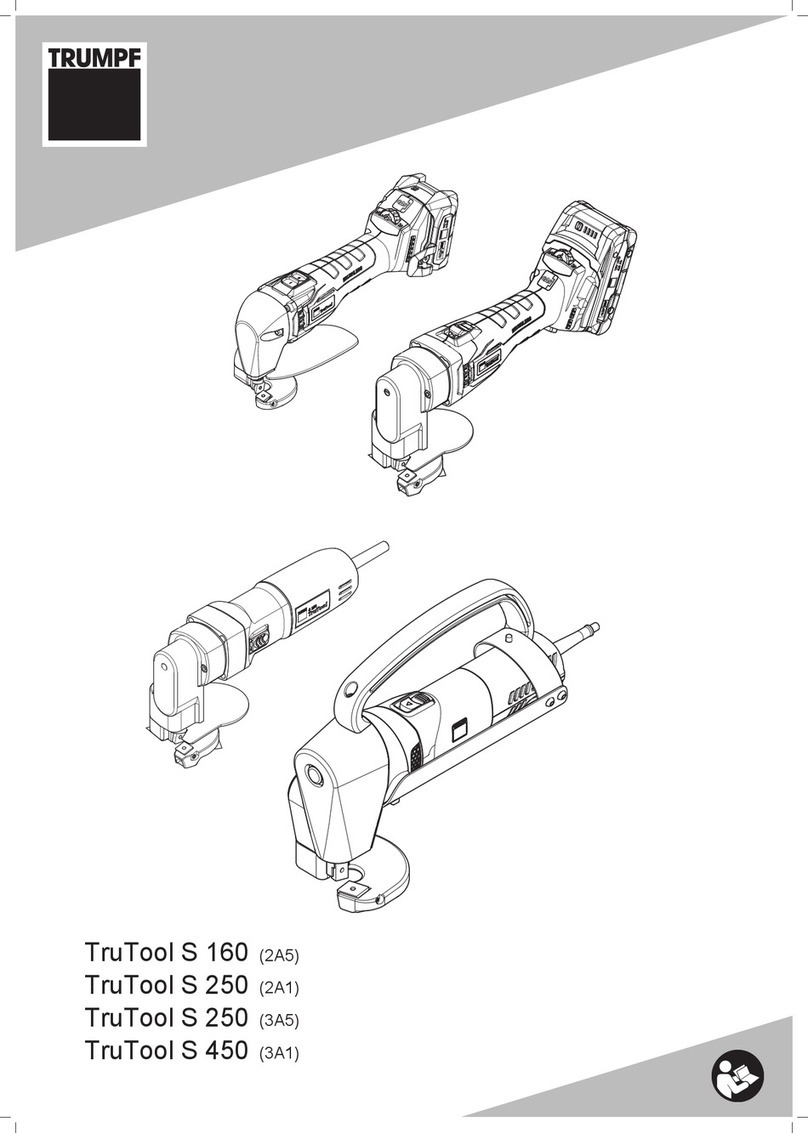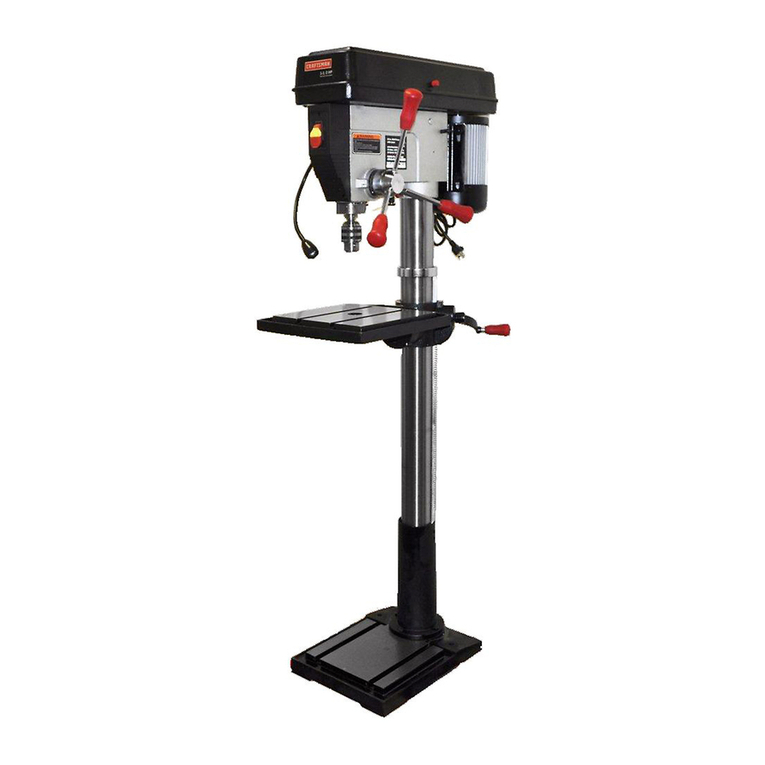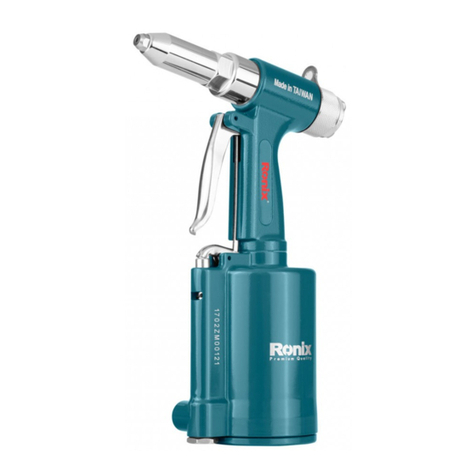Greatneck 80160 User manual

Owner’s Manual
Variable Speed Jigsaw
80160
CAUTION:
Before using this
jigsaw or any of its
accessories, read this
manual and follow all
Safety Rules and
Operating Instructions.
• General Safety Rules
Specific Safety Rules
and Symbols
• Functional
• Description
• Assembly
• Operation
• Maintenance
• Accessories

2
SECTION
PAGE
SECTION
PAGE
Product specifications …………...
2
Know your jigsaw ..……..........
11
Warranty …………………………..
2
Accessories ……………………
12
Power tool safety …………………
3–7
Contents……..………..............
12
Symbols …………………………..
8
Assembly & operation ..………
13–16
Specific safety rules ……………..
9
Maintenance…….……………..
17
Extension cord safety ……………
10
Parts Listing ……………………
18-19
TOLL FREE HELPLINE 1-866-458-2472
Distributed by GreatNeck Tools LLC, Mineola, NY 11501
Rev 1/11
Rating:
120 V, 60 Hz AC
Amperes:
3.3 A
Blade speed:
800 - 3000 SPM (no load)
Stroke length:
11/16”
Cutting depth @ 90°:
2 9/16” (65 mm) in wood
5/32” (4 mm) in steel
Sole plate tilt:
0–45°
TABLE OF CONTENTS
PRODUCT SPECIFICATIONS
WARRANTY
TOLL FREE HOTLINE 1-866-458-2472
ONE YEAR LIMITED WARRANTY
For one year from the date of purchase of this GreatNeck® product you
find any defect in material or workmanship, through normal usage,
either return it to the place of purchase, or send it to GreatNeck® Tools
LLC. for repair or replacement at our discretion. In order to obtain this
service send your tool and proof of purchase, transportation pre-paid, to
GreatNeck® Tools LLC Q.A. Dept, 3580 E. Raines Rd. #3,
Memphis, TN 38118. This warranty gives you specific legal rights,
and you may also have other rights, which vary from state to state.
This product is not guaranteed if used for industrial
or commercial purposes.

3
This instruction manual includes the following:
• General Safety Rules
• Specific Safety Rules and Symbols
• Functional Description
• Assembly
• Operation
• Maintenance
• Accessories
GENERAL SAFETY WARNINGS
WARNING: Before using this tool or any of its accessories, read this
manual and follow all Safety Rules and Operating Instructions. The important
precautions, safeguards and instructions appearing in this manual are not
meant to cover all possible situations. It must be understood that common
sense and caution are factors which cannot be built into the product.
!
Have you read “POWER TOOL
SAFETY”, “SPECIFIC SAFETY
RULES”, “EXTENSION CORD
GUIDELINES” & “SYMBOLS” on
pages 3, 4, 5, 6, 7, 8 & 9 of this
Manual? If not, please do it now
before you operate this jigsaw.
Your safety depends on it!
Every time you use the jigsaw you
should verify the following:
1. Cord is not damaged.
2. Blade is correct for the type
of material being cut.
3. Blade is in good condition
and securely tightened.
4. Safety glasses, dust mask
and hearing protection are
being worn.
Failure to adhere to these safety
rules can greatly increase the
chances of injury.
WARNING
!
SAVE THESE INSTRUCTIONS FOR REFERENCE
WARNINGS:
Always wear safety goggles or
safety glasses with side shields
when operating your jigsaw.
Failure to do so could result in
foreign objects being thrown into
your eyes resulting in possible
serious eye damage.
Always wear an appropriate dust
mask and hearing protection
when using your jigsaw.
Clamp or otherwise secure your
workpiece to prevent it from
moving under the saw while being
cut. An unsecured workpiece could
be thrown toward the operator
causing injury.
!

4
EYE, EAR & LUNG PROTECTION
GENERAL SAFETY WARNINGS
!
ALWAYS WEAR EYE PROTECTION THAT CONFORMS WITH CSA
REQUIREMENTS or ANSI SAFETY STANDARD Z87.1
FLYING DEBRIS can cause permanent eye damage. Prescription
eyeglasses ARE NOT a replacement for proper eye protection.
WARNING: Non-compliant eyewear can cause serious injury if
broken during operation of a power tool.
SAVE THESE INSTRUCTIONS FOR REFERENCE
WARNING: Use hearing protection, particularly during extended
periods of operation of the tool, or if the operation is noisy.
!
WEAR A DUST MASK THAT IS DESIGNED TO BE USED WHEN
OPERATING A POWER TOOL IN A DUSTY ENVIRONMENT.
WARNING: Dust that is created by power sanding, sawing, grinding,
drilling, and other construction activities may contain chemicals that are
known to cause cancer, birth defects. or other genetic abnormalities. These
chemicals include:
Lead from lead-based paints
Crystalline silica from bricks, cement, and other masonry products
Arsenic and chromium from chemically-treated lumber
The level of risk from exposure to these chemicals varies according to how
often this type of work is performed. In order to reduce exposure to these
chemicals, work in a well-ventilated area, and use approved safety
equipment, such as a dust mask that is specifically designed to filter out
microscopic particles.
!

5
ELECTRICAL SAFETY
GENERAL SAFETY WARNINGS
WARNING: To avoid electrical hazards, fire hazards or damage to the
tool, use proper circuit protection.
This tool is wired at the factory for 120 V AC operation. It must be
connected to a 120 V AC, 15 A circuit that is protected by a time-delayed
fuse or circuit breaker. To avoid shock or fire, replace power cord
immediately if it is worn, cut or damaged in any way.
SAVE THESE INSTRUCTIONS FOR REFERENCE

6
GENERAL POWER TOOL SAFETY
WARNINGS
WARNING: Read all safety
warnings and instructions. Failure to
follow the warnings and instructions may
result in electric shock, fire and/or serious
injury.
Save all warnings and instructions for
future reference.
WORK AREA SAFETY
Keep your work area clean and well lit.
Cluttered or dark areas invite accidents.
Do not operate power tools in explosive
atmospheres, such as in the presence of
flammable liquids, gases or dust. Power
tools create sparks which may ignite the
dust or fumes.
Keep children and bystanders away
while operating a power tool.
Distractions can cause you to lose control.
ELECTRICAL SAFETY
Power tool plugs must match the outlet.
Never modify the plug in any way. Do
not use any adaptor plugs with earthed
(grounded) power tools. Unmodified
plugs and matching outlets will reduce risk
of electric shock.
Avoid body contact with earthed or
grounded surfaces such as pipes,
radiators, ranges, and refrigerators.
There is an increased risk of electric shock
if your body is earthed or grounded.
Do not expose power tools to rain or
wet conditions. Water entering a power
tool will increase the risk of electric shock.
Do not abuse the cord. Never use the
cord for carrying, pulling or unplugging
the power tool. Keep cord away from
heat, oil, sharp edges or moving parts.
Damaged or entangled cords increase the
risk of electric shock.
When operating a power tool outdoors,
use an extension cord type suitable for
outdoor use. Use of a cord suitable for
outdoor use reduces the risk of electric
shock.
If operating a power tool in a damp
location is unavoidable, use a ground
fault circuit interrupter (GFCI). Use of a
GFCI reduces the risk of electric shock.
PERSONAL SAFETY
Stay alert, watch what you are doing
and use common sense when operating
a power tool. Do not use a power tool
while you are tired or under the
influence of drugs, alcohol or
medication. A moment of inattention while
operating power tools may result in serious
personal injury.
Use personal protective equipment.
Always wear eye protection. Protective
equipment such as dust mask, non-skid
safety shoes, hard hat, or hearing
protection used for appropriate conditions
will reduce personal injuries.
POWER TOOL SAFETY
!
SAVE THESE INSTRUCTIONS FOR REFERENCE

7
PERSONAL SAFETY – cont’d
Prevent unintentional starting. Ensure
the switch is in the off-position before
connecting to the power source, picking
up or carrying the tool. Carrying power
tools with your finger on the switch or
energizing power tools that have the switch
on invites accidents.
Remove any adjusting key or wrench
before turning the power tool on. A
wrench or key that is left attached to a
rotating part of the power tool may result in
personal injury.
Do not overreach. Keep proper footing
and balance at all times. This enables
better control of the power tool in
unexpected situations.
Dress properly. Do not wear loose
clothing or jewelry. Keep your hair,
clothing and gloves away from moving
parts. Loose clothing, jewelry or long hair
can be caught in moving parts.
If devices are provided for the
connection of dust extraction and
collection facilities, ensure these are
connected properly and used. Use of
dust collection can reduce dust-related
hazards.
POWER TOOL USE AND CARE
Do not force the power tool. Use the
correct power tool for your application.
The correct power tool will do the job better
and safer when used at the rate for which it
was designed.
Do not use the power tool if the switch
does not turn it on and off. Any power
tool that cannot be controlled with the
switch is dangerous and must be repaired.
Disconnect the plug from the power
source before making any adjustments,
changing accessories, or storing power
tools. Such preventive safety measures
reduce the risk of starting the power tool
accidentally.
Store power tools out of the reach of
children and do not allow persons
unfamiliar with the power tool or these
instructions to operate the power tool.
Power tools are dangerous in the hands of
untrained users.
Maintain power tools. Check for
misalignment or binding of moving
parts, breakage of parts and any other
condition that may affect the power
tool’s operation. If damaged, have the
power tool repaired before use. Many
accidents are caused by poorly maintained
power tools.
Keep cutting tools sharp and clean.
Properly maintained power tools with sharp
cutting edges are less likely to bind and are
easier to control.
Use the power tool, accessories and
tool bits etc. in accordance with these
instructions, taking into account the
working conditions and the work to be
performed. Use of the power tool for
operations different from those intended
could result in a hazardous condition.
POWER TOOL SAFETY

8
This symbol designates that
this tool is listed with both
Canadian and U.S.
requirements by Underwriters
Laboratories.
V
volts
A
amperes
Hz
hertz
W
watt
kW
kilowatts
microfarads
L
liters
kg
kilograms
H
hours
N/cm2
newtons per square
centimeter
Pa
pascals
Min
minutes
S
seconds
alternating current
three-phase alternating
current
three-phase alternating
current with neutral
direct current
no load speed
alternating or direct
current
class II construction
splash proof
construction
watertight construction
protective earthing at
earthing terminal, Class I
tools
revolutions or
reciprocations per
minute
diameter
off position
arrow
warning symbol
WARNING: Some of the symbols below may be used on your tool.
Please study them and learn their meaning. Proper interpretation of
these symbols will allow you to operate the tool better and safer.
!
SYMBOLS

9
WARNING: For your safety, do not
plug your jigsaw into the power source
until you have carefully read and
understood this Owner’s Manual.
Always wear eye protection.
Any power tool can throw
foreign objects into your eyes
and cause permanent eye
damage. ALWAYS wear safety goggles
(not glasses) that comply with ANSI safety
standard Z87.1. Everyday glasses have
only impact resistant lenses. They ARE
NOT safety glasses.
WARNING: Glasses or goggles
not in compliance with ANSI Z87.1
could cause serious injury when they
break.
WARNING: Always use a dust
mask when sawing.
Use hearing protection, particularly
during extended periods of operation.
Do not wear gloves, neckties or loose
clothing.
Do not saw material too small to be
securely held.
Make sure there are no nails or foreign
objects in the part of the workpiece to be
sawed.
Always keep hands out of the path of
the saw blade. Avoid awkward hand
positions where a sudden slip could cause
your hand to move into the path of the saw
blade.
To avoid injury from accidental starting,
always remove the plug from the power
source before installing or removing a saw
blade.
Make sure the saw blade is sharp and in
good condition. This will ensure cleaner
cuts and reduce the risk of breaking the
blade.
Hold power tool by insulated gripping
surfaces when performing an operation
where the cutting tool may contact
hidden wiring or its own cord. Contact
with a “live” wire will make exposed metal
parts of the tool “live” and shock the
operator.
Use clamps or another practical way to
secure and support the workpiece to a
stable platform. Holding the work by hand
or against your body leaves it unstable and
may lead to loss of control.
SAVE THESE INSTRUCTIONS FOR REFERENCE
!
!
SPECIFIC SAFETY RULES
!

10
Make sure your extension cord is the
proper size. Use the proper minimum
gauge extension cord. An undersized cord
will cause a drop in line voltage resulting in
loss of power and overheating. The table at
right shows the correct size to use
according to cord length and nameplate
ampere rating. If in doubt, use the next
heavier gauge. The smaller the gauge
number the heavier the cord.
Be sure your extension cord is properly
wired and in good condition. Always
replace a damaged extension cord or have
it repaired by a qualified electrician before
using it. Protect your extension cord from
sharp objects, excessive heat and damp or
wet areas.
Use a separate electrical circuit for your
power tools. This circuit must not be less
than 14 gauge wire and should be
protected with either a 15A time delay fuse
or circuit breaker. Before connecting the
power tool to the power source, make sure
the switch is in the OFF position and the
power source is the same as indicated on
the nameplate. Running at lower voltage
will damage the motor.
WARNING: Repair or replace
damaged or worn extension cords
immediately.
Select the appropriate extension cord
gauge and length using the chart on the
following page.
!
SAVE THESE INSTRUCTIONS FOR REFERENCE
MINIMUM GAUGE (AWG)
EXTENSION CORDS (120 V use only)
Amperage
rating
Total length
More
than
Not
more
than
25'
(7.5 m)
50'
(15 m)
100'
(30 m)
150'
(45 m)
0
6
18
16
16
14
6
10
18
16
14
12
10
12
16
16
14
12
12
16
14
12
Not Applicable
EXTENSION CORD SAFETY

11
KNOW YOUR JIGSAW
Blade roller
Chip guard
Tilting sole
plate
Motor vents
Dust port
3 mm
Hex key
Lock-ON
button
Trigger
switch
Hex key
holder
Blade screws
Variable
speed control
wheel

12
AVAILABLE ACCESSORIES
WARNING: Use only accessories
recommended for this jigsaw. Follow
instructions that accompany
accessories. Use of improper
accessories may cause injury to the
operator or damage to the jigsaw.
Do not use any accessories unless you
have completely read the instructions or
Owner’s Manual for that accessory.
WARNING: If any part is missing
or damaged, do not operate the jigsaw.
Carefully unpack the jigsaw. Items should
include:
1. Jigsaw
2. 3 mm hex key
3. Owner’s manual
WARNING: To avoid fire or toxic
reaction, never use gasoline, naphtha,
acetone, lacquer thinner or similar
highly volatile solvents to clean the
tool.
!
!
!
ACCESSORIES & CARTON CONTENTS
CONTENTS
1
2

13
WARNING: Always disconnect
your jigsaw from the power source
when replacing blades, tilting the sole
plate, cleaning or when the tool is not in
use. Disconnecting the jigsaw will
prevent accidental starting that could
cause serious personal injury.
INSTALLING BLADES (not included)
1. Unplug your jigsaw from the power
source.
WARNING: Failure to unplug your
jigsaw from the power source could
result in accidental starting causing
serious injury.
2. Insert the hex key (1) through the
access hole in the chip shield (2)
(Fig. 1).
NOTE: Use the 3 mm hex key
supplied to loosen screws.
3. Loosen both blade clamp screws (3)
and insert the saw blade (4) as far as
possible into the slot in the blade
clamp.
NOTES:
a) Ensure the blade is nested in the
groove in the support roller (5).
b) The holes in universal fitting saw
blades are not designed for alignment
with the screw holes in the blade
clamp.
4. Tighten both blade clamp screws (3)
securely against the blade.
To remove the jigsaw blade:
1. Unplug your jigsaw.
2. Loosen blade clamp screws (3) using
the 3 mm hex key.
3. Remove the blade.
ON/OFF TRIGGER SWITCH
To turn your jigsaw ON, depress the trigger
switch (1) (Fig. 2). To turn the saw OFF,
release the trigger switch.
!
ASSEMBLY & OPERATION
!
Fig. 1
Fig. 2

14
LOCK-ON BUTTON
Your jigsaw is equipped with a lock-on
feature, which is convenient when
continuous cutting for extended periods of
time is required. To lock the switch ON,
depress the trigger switch (1), push in and
hold the lock-on button (2), then release
the trigger (Fig. 3). Release the lock-on
button and your jigsaw will continue
running. Depress and release the trigger
switch to release lock.
NOTE: The lock-on button can be
accessed from either side of the handle.
GENERAL CUTTING
WARNING: Keep hands and
fingers away from the space between
the motor housing and the blade clamp.
Do not reach underneath workpiece
while the saw is running.
Rest the front of the sole plate on the
workpiece and align the cutting edge of
the blade with the cutting line on your
workpiece (Fig. 4). Make sure the power
cord is out of your way and not in the
path the blade will follow. Start your
saw and move it toward the workpiece.
Apply enough downward pressure to
keep the saw steady and only enough
forward pressure to keep the blade
cutting freely.
WARNING: Do not force the saw.
Forcing the saw may overheat the
motor and break saw blades.
DUST EXTRACTION
The dust extraction outlet allows a dust
extraction system to be fitted to the jigsaw
permitting the efficient removal of dust
whilst the tool is in use. The adaptor allows
a standard household vacuum cleaner to
be connected to the outlet.
WARNING: Do not use a dust
extraction system or a vacuum
cleaner when cutting metal. Sparks may
ignite residual wood dust.
ASSEMBLY & OPERATION
Fig. 3
Fig. 4
!
SPEED CONTROLLER
Adjusting the speed to suit the application
enhances cutting performance and saves
the blade from undue wear.
To determine optimum cutting speed first
perform test cuts on offcuts of the
workpiece to be cut.
Rotate the speed controller, located at
the back of the jigsaw to set the blade
speed.
Position "1" denotes the lowest speed.
Position "6" denotes the highest speed.
!

15
BEVEL CUTTING
Bevel cutting angles may be adjusted
from zero to 45° either left or right. To
adjust the bevel angle:
1. Loosen both sole plate pivot screws
(1) until the sole plate (2) can be
rotated
(Fig. 5).
NOTE: Use the 3 mm hex key
supplied.
2. Bevel angles (3) are marked on a
scale located on the side of the sole
plate (Fig. 6).
3. Slide the sole plate back. Align the
edge of the motor housing (4) with the
desired angle mark (3) on the side of
the base, then slide the sole plate
forward to engage the notches (5) into
the motor housing pin.
BEVEL CUTTING - cont’d
NOTE: Angle marks on the sides of the
jigsaw base are for reference only.
Operator should use a protractor to verify
angles.
4. Once the desired bevel angle is
obtained, lock the sole plate by
tightening the sole plate pivot screws.
5. Make a test cut in a scrap piece of
material and measure the bevel angle.
Adjust bevel angle if necessary.
PLUNGE CUTTING
WARNING: To avoid loss of
control, broken blades or damage to the
workpiece, always use extreme caution
when making plunge cuts. It is not
recommended to plunge cut any
material other than wood. Wherever
possible, drill a 3/8" (8 mm) or bigger
pilot hole in the area to be cut out and
start cutting with the blade in the pilot
hole. This will avoid the need to plunge
cut.
NOTE: Use only blades with 7 teeth per
inch for plunge cutting.
1. To plunge cut an inside hole, clearly
mark the cutting line on the workpiece.
2. Set the bevel angle at 0° then lock the
sole plate.
3. Tilt the saw forward so it rests on the
front edge of the sole plate and in a
position so the blade will NOT touch
the workpiece when the switch is
turned ON (Fig. 7).
NOTE: Make sure the saw blade is
inside the area to be cut.
!
OPERATION
F
ig. 5
Fig. 6

16
PLUNGE CUTTING – cont’d
4. Start the saw and slowly lower the
blade onto the workpiece while making
sure the front of the sole plate remains
in contact with the workpiece. Allow
the blade to cut through the wood.
5. Continue lowering the blade into the
workpiece until the sole plate rests flat
on the workpiece. Continue sawing
toward the cutting line and complete
the cut as required.
METAL CUTTING
Many types of metal can be cut with your
jigsaw. When cutting any kind of material,
be careful not to twist or bend the blades.
Do not force the blade. If the blade
chatters or vibrates excessively, use a finer
tooth blade. If the blade heats excessively,
reduce speed of cutting. If the blade teeth
become clogged when cutting soft metals
such as aluminum, use a coarser blade
with fewer teeth per inch. Clamp all work
firmly and saw as close as possible to the
clamping point to eliminate any vibration of
the work being cut.
When cutting conduit, pipe or angle iron,
clamp work in a vise if possible and saw
close to the vise. To cut thin sheet
materials, “sandwich” the material between
hardboard or plywood and clamp the layers
to eliminate material vibration and tearing.
By doing this, the material will be cut
smoothly. Lay out your pattern or cutting
lines on top of the “sandwich”.
Fig. 7
OPERATION

17
GENERAL
WARNING: Do not at any time
allow solvents such as brake fluids,
gasoline, petroleum-based products,
penetrating oils, etc. to come in contact
with plastic parts. They contain
chemicals that can damage, weaken or
destroy plastic. Use a clean dry cloth to
remove dirt, dust, oil, grease, etc.
WARNING: Use safety goggles
when using an air jet to blow dust out of
the jigsaw. Using this jigsaw for cutting
fiberglass, wallboard or plaster will result in
accelerated wear due to the abrasive
nature of these materials. It is important
that you clean the jigsaw frequently when
cutting these materials.
DO NOT abuse power tools. Abusive
practices can damage the tool as well as
the workpiece.
WARNING: DO NOT attempt to
modify this jigsaw or create accessories
not recommended for this jigsaw. Any
such alteration or modification is
misuse and could result in a hazardous
condition leading to possible serious
injury. It will also void the warranty.
LUBRICATION
All of the bearings in this jigsaw are
lubricated with a sufficient amount of high-
grade lubricant for the life of the unit under
normal conditions. Therefore, no further
lubrication is required.
!
!
!
MAINTENANCE

18
PARTS LIST MODEL 80160
BLADE NOT
INCLUDED

19
PARTS LIST MODEL 80160
Customer Service: 1-866-458-2472
www.greatnecktools.com
ALWAYS WEAR SAFETY GOGGLES
GREATNECK TOOLS, LLC
MINEOLA, NY 11501
MADE IN CHINA
(not included)
Table of contents
Other Greatneck Power Tools manuals
Popular Power Tools manuals by other brands
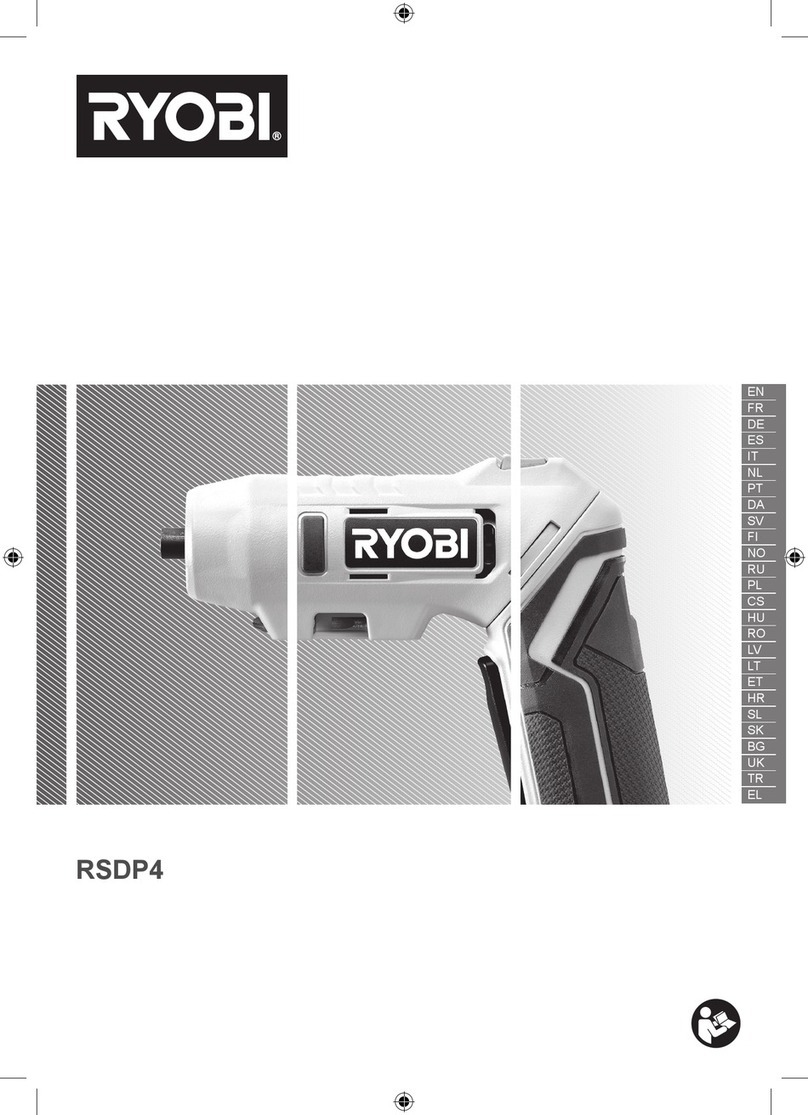
Ryobi
Ryobi RSDP4 manual
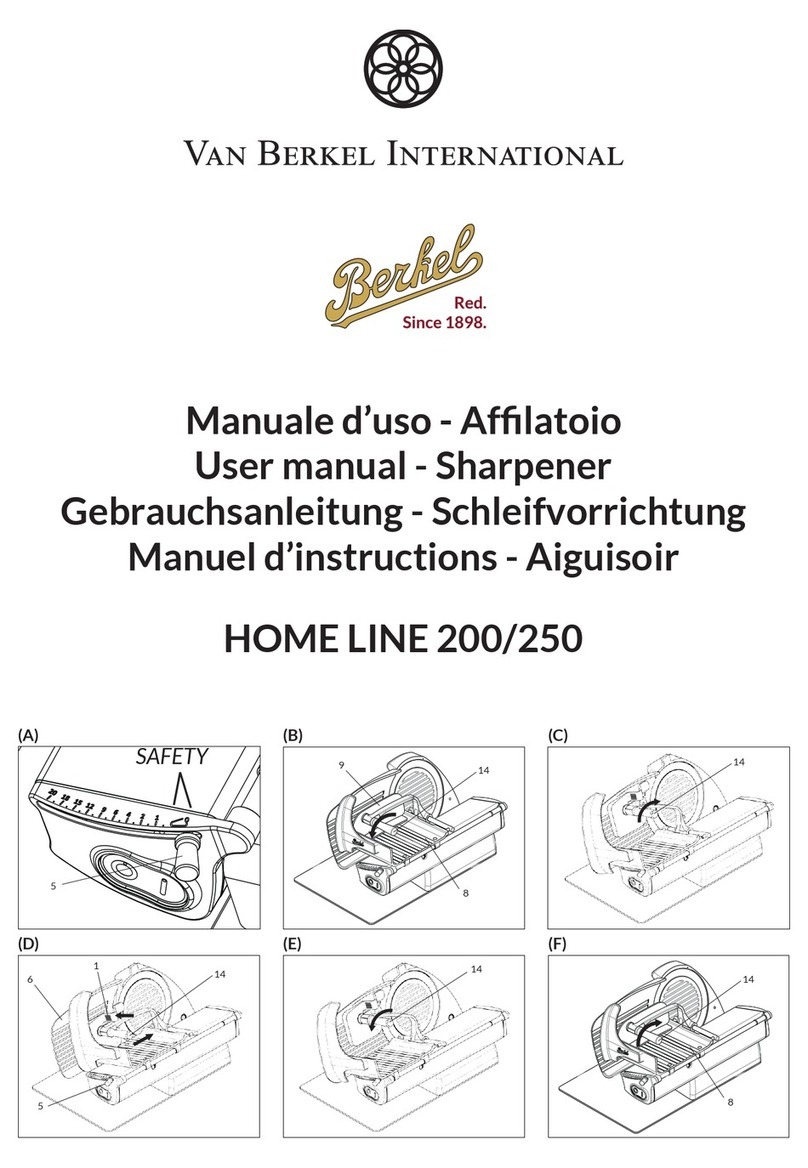
Berker
Berker HOME LINE 200 user manual
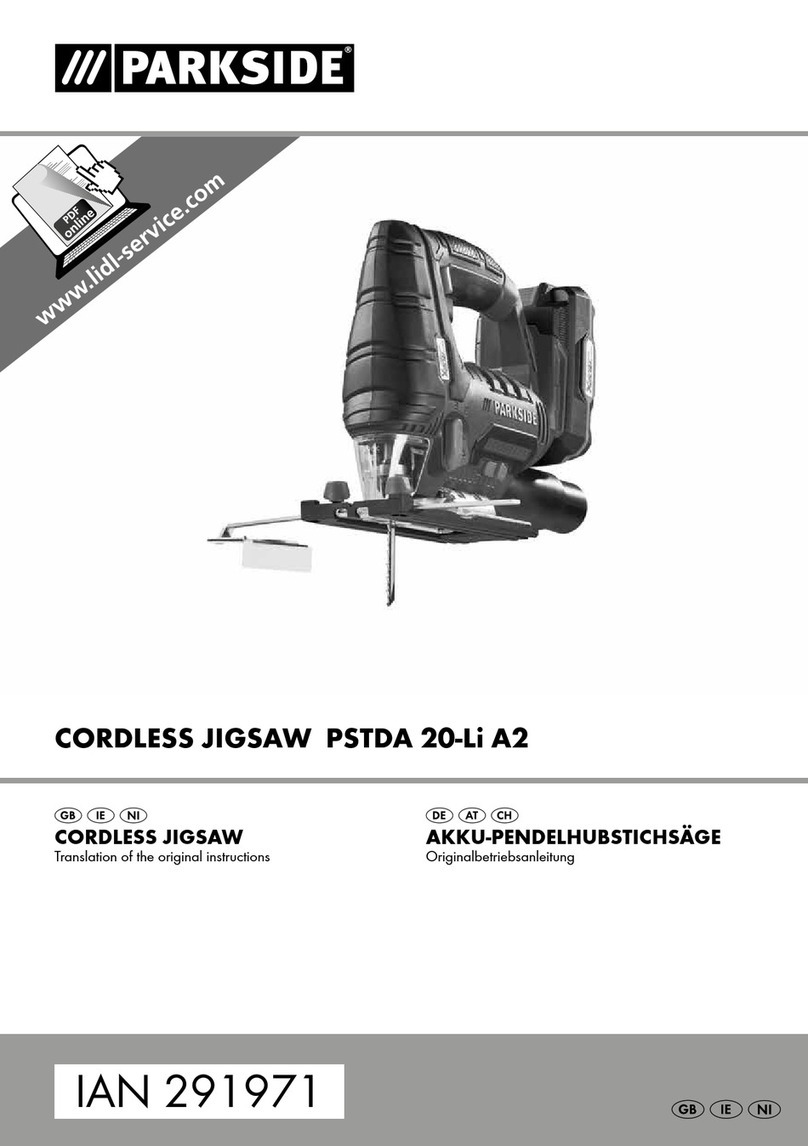
Parkside
Parkside PSTDA 20-Li A2 Translation of the original instructions
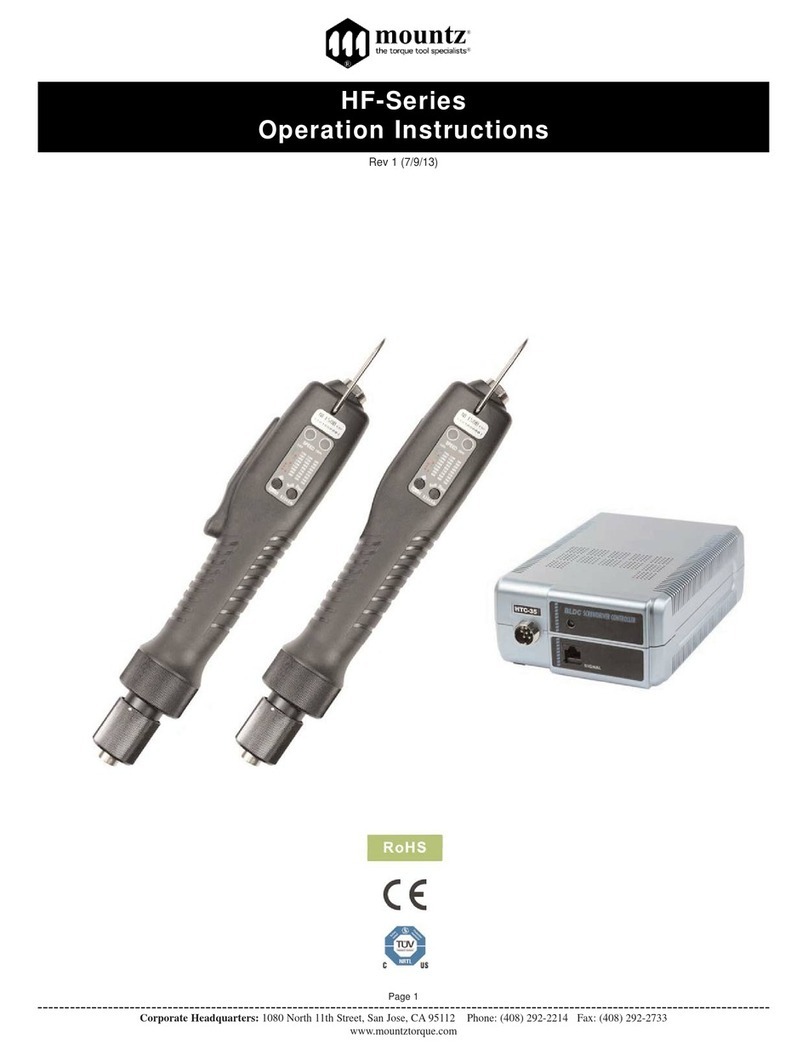
Mountz
Mountz HF-Series operation instruction
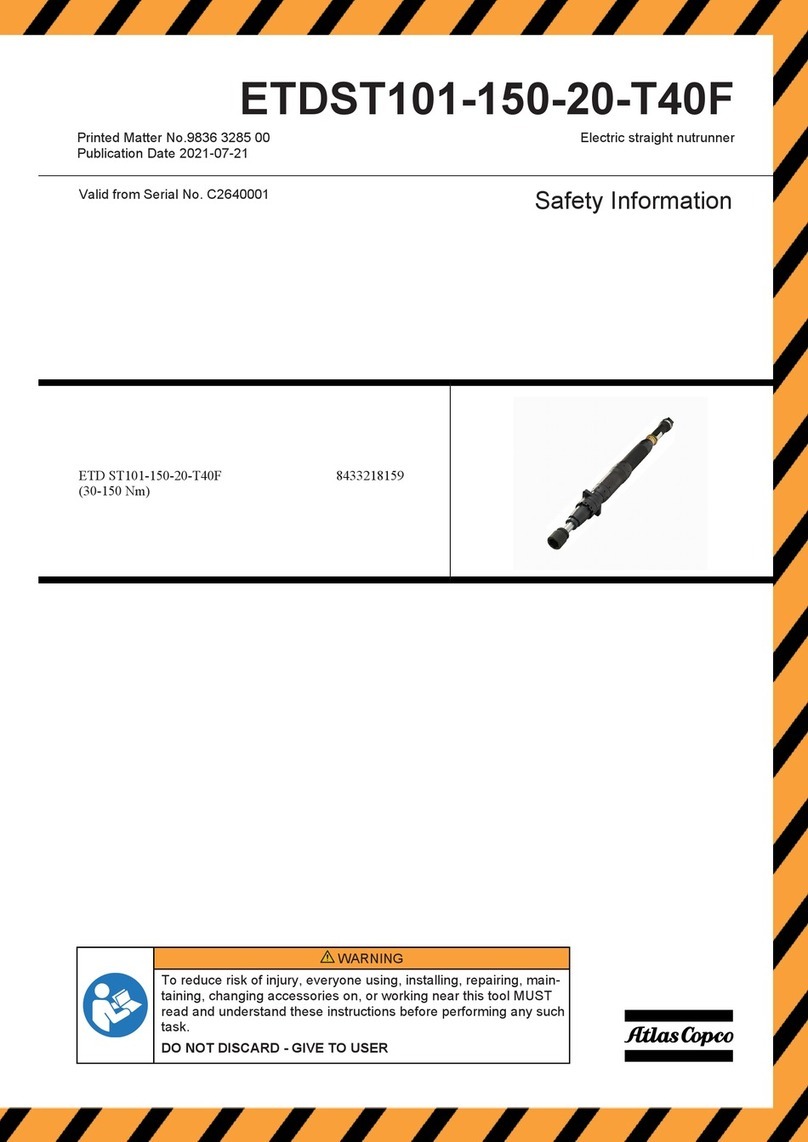
Atlas Copco
Atlas Copco ETDST101-150-20-T40F Safety information

General Pipe Cleaners
General Pipe Cleaners Super-Vee operating instructions
